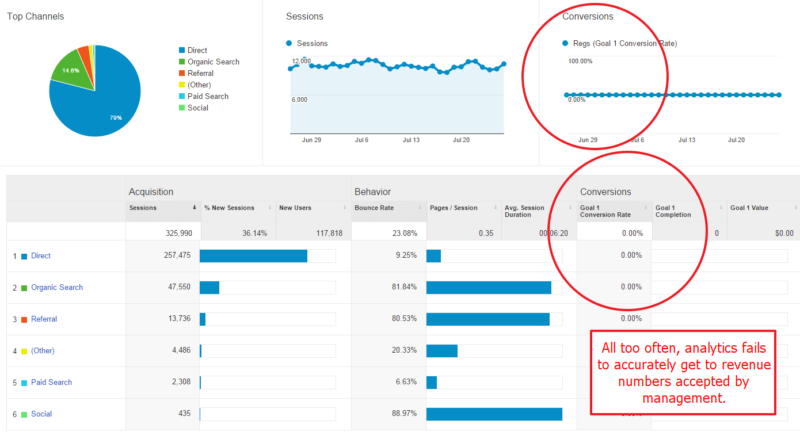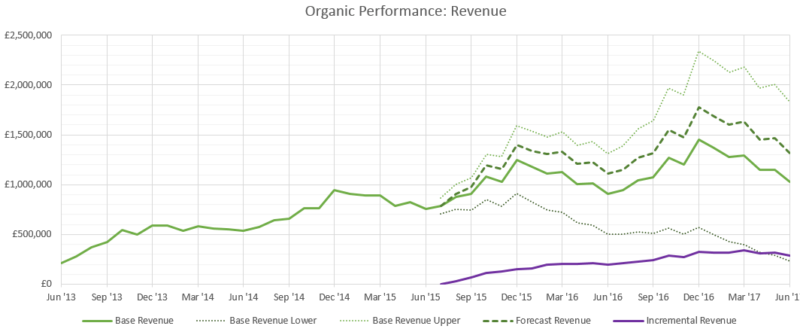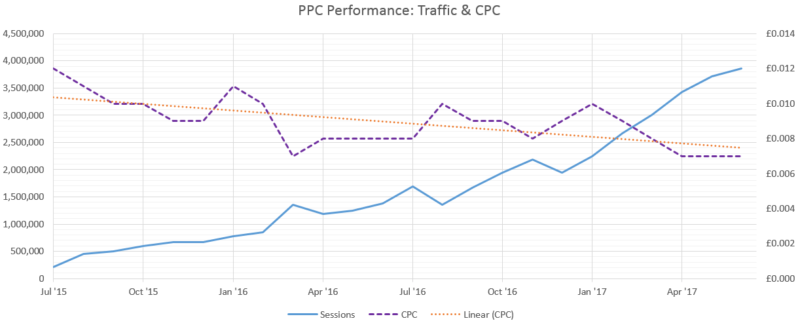Calculating SEO Impact To Get Things Done
Columnist Chris Liversidge reminds us that it getting buy-in from clients or the C-Suite often depends on your ability demonstrate the value of your recommendations in terms of revenue.
The most frequent question I receive when discussing SEO recommendations with clients is, “What impact will that have?” The questioner might be referring to rankings, possibly traffic, much more rarely conversion rate, or most commonly revenue.
Understanding the impact of a particular change is critical to executing effective SEO. It allows you, as the consultant, to identify your priorities and allows your client to correctly prioritize and schedule your recommendations into their workflow.
There are so many quantifiable changes vying for attention on a modern website that prioritizing change requests can be daunting. SEO practitioners seeking to get their recommendations implemented must be able to make the case for inclusion as strongly as possible.
When working internally, looking for support from C-level executives for your search marketing team or budgets, it’s also important to tie a revenue figure to your proposed changes — otherwise, you may find that you never get enough priority to get changes done!
So how do we calculate the financial impact of our recommendations?
The Value of Analytics & “Accepted Metrics”
Chances are your Web analytics are in pretty good shape but that you could do more to be 100% accurate when it comes to the final revenue allocation to source.
It might be that everything is diligently tagged, and you’ve set accurate e-commerce tracking (taking local taxes into account) or set a dollar amount against enquiry based on historic enquiries versus closed deals if you’re a B2B or services business.
However, it’s much more likely that you have multiple gaps in that pipeline to revenue, which means your Web analytics numbers are often seen as somehow separate from your actual reported business metrics (those unstyled Excel spreadsheets densely packed with numbers that circulate on Monday mornings alongside very strong coffees).

In the worst case, you’ll have no revenue data or goal values at all, meaning a lot of heavy lifting awaits to transform your Web analytics into actionable recommendations with dollar value for the C-Suite. (Click to enlarge.)
I hate to be the bearer of bad news, but if your numbers — however well presented — don’t tie into the C-suite’s numbers, then you’ll find that your priorities, however well researched, will end up being taken with very large pinches of salt. Close the gap, though, and you’ll find you can once again Get Things Done (GTD FTW!).
This is where “Accepted Metrics” come in. Your business — as with all businesses — makes assumptions around some key metrics which allow inputs to be translated into revenue. It might be an “average lead enquiry conversion rate,” or possibly a “returns rate,” that is the key missing metric here. Regardless of the exact metric, you can be sure your C-suite will know it by heart.
This is your route into getting action. Befriend your C-suite. Offer some part-exchange time — perhaps if you can supply answers to their questions about just how much potential there is to pivot their website into an app-only service (answer: please don’t try to do that!), in return they’ll let you take them out to lunch with a copy of their numbers and show where the gaps are in yours for the same period.
Be thorough — and above all, show your work! If you build an Excel model that lets you dump raw analytics data into one tab, add in the metrics you’ve discovered from your friendly C-Exec in another, then generate “True Adjusted” revenue, you will be able to revisit your metrics and tweak when you get feedback on their accuracy or as they change over time.
(Oh, and by the way — if you really want to know what those metrics are, nothing will get you access to them faster than making an assumption about them and getting corrected!)
Once you’ve done that, you can employ statistical modelling to build bullet-proof forecasts that you can tweak to show scenarios where your recommended fix is deployed (along with the revenue impact).

Forecasting revenue impact for your changes with up to two year run rates is a great way to get buy in to your SEO changes.
Aiming to get signoff on your development of a hreflang sitemap? Run the numbers and tweak the traffic uplift based on case study data on impact. (At QueryClick, for example, we commonly see ~150–165% uplift for implementation of this technique for 5+ country websites — your C-suite should be clamouring for you to start with that scenario rather than complaining about the 2–3 days dev time you’re requesting.)
Use a two-year timeline to show the long-term benefits of investing time now, and you’ll stand a greater chance of tipping the value proposition in your favor. (Remember, you’ll need to overcome inertia!)
For smaller tweaks in strategy affecting metrics with a direct impact on revenue, show the metric value change against revenue or traffic directly in separate graphs to illustrate their correlation to predicted performance. This will speak directly to the C-suite.
For example, changes in PPC click-through rates (CTRs) from a planned ad refresh informed by an A/B test you’ve completed can be easily matched through to revenue or traffic. If you’re requesting a regular cycle of tests and refreshes across different parts of your PPC campaign, you can show this incremental increase easily and clearly against average campaign CTRs and traffic (see below).

Changes that impact CPCs can be transformational for revenue performance, so show this aspect alongside the revenue context to get clarity with your C-suite decision makers.
By talking the same language as your C-suite — and crucially, using the same metrics — you’ll find that you are able to get more buy-in for your proposed changes and more traction generally. This will empower you to deliver real bottom-line business performance.
In my experience, the best SEO (and PPC) campaigns maintain a focus on the business bottom line. In addition to getting more changes implemented by the business, you’ll find your strategy is always in tune with management’s strategy, and your contributions to business performance will be more visible.
Opinions expressed in this article are those of the guest author and not necessarily Search Engine Land. Staff authors are listed here.
Related stories
